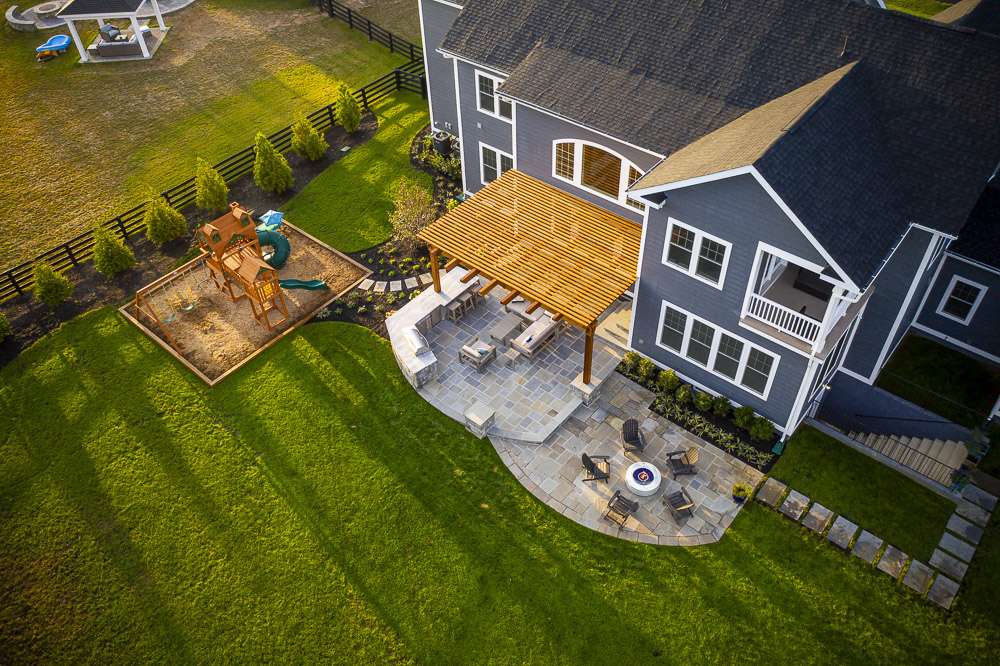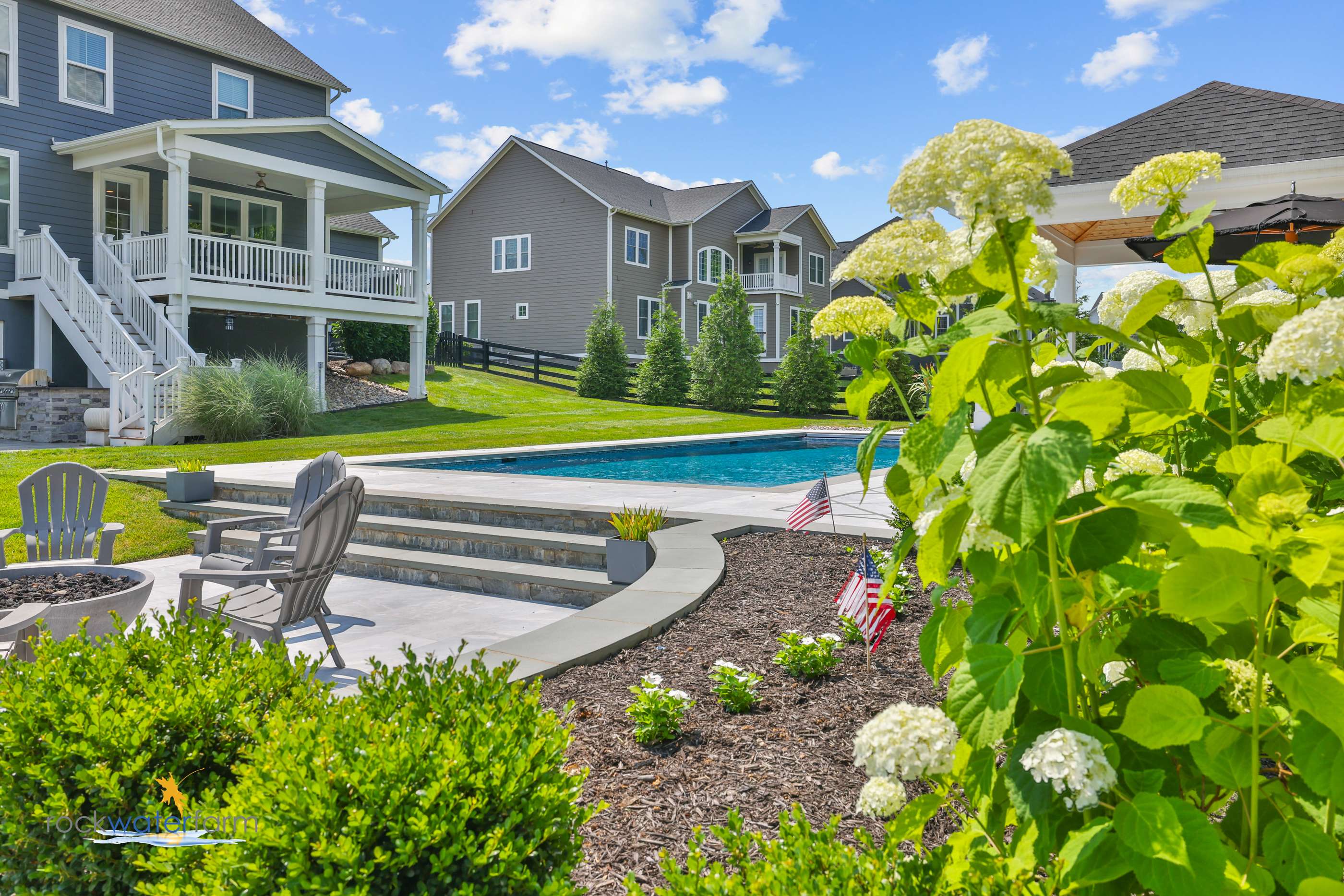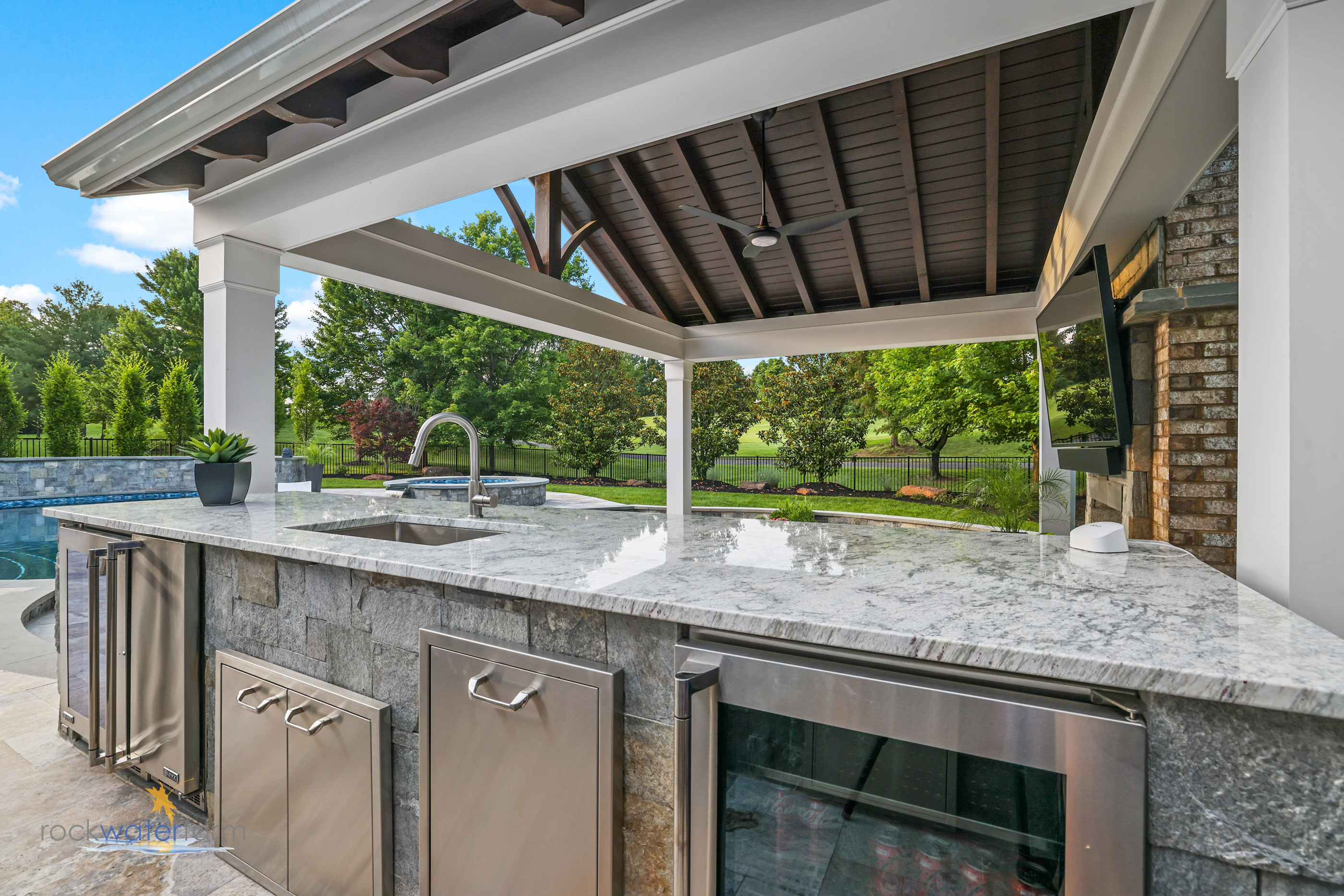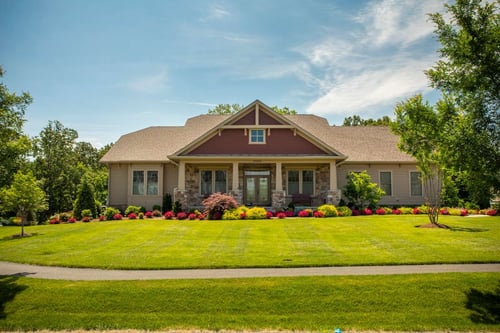 In this DIY age where people love finding “hacks,” tips,” and “tricks,” there are a lot of different landscaping ideas out there that you might find in an online search. The trouble is, not every tip or trick is always a good one.
In this DIY age where people love finding “hacks,” tips,” and “tricks,” there are a lot of different landscaping ideas out there that you might find in an online search. The trouble is, not every tip or trick is always a good one.
Even certain landscaping tips that seem to be relatively common practice (or potentially even used by “pros”) are sometimes bad ideas that will lead you down a road of hassles and headaches.
We hate it when we homeowners end up implementing landscaping ideas that lead to more maintenance and aggravation. That’s why we’ve rounded up a list of some of the bad landscaping tips and ideas that you’d be best to avoid.
1. Use Weed Fabric to Reduce Weeds
Weed fabric (sometimes called “landscape fabric”) definitely sounds like a good idea in theory. This is a textile material that is meant to control weeds by inhibiting their exposure to sunlight. The idea is to install the fabric around plants and cover other areas where weed growth is unwanted.
But weed fabric can ultimately lead to a number of hassles—and potentially, even some more significant problems.
For one, it can cause problems for your soil. This is probably because it can inhibit water, air, and nutrients from penetrating into the soil where they’re needed to help your desirable plants grow. We’ve found that the soil underneath of weed fabric is more compacted as a result.
It’s also important to note that pesky and persistent weeds do often make their way through the fabric and often become entangled in it. Trying to pull those weeds out is now a lot more difficult! You have to get them untangled from the fabric.
Even deciding to change plant material is a lot more difficult with weed fabric in place. Digging up existing plants and installing new ones can be trickier than it has to be. We often see weed fabric sticking out and entangled amongst plants, creating a real eyesore.
The bottom line? For most homeowners who have used it in the past, weed fabric ends up being more of a hassle than a help. If you’re really serious about suppressing weeds, mulching (which we’ll cover in more detail) combined with a landscape maintenance program is your best bet.
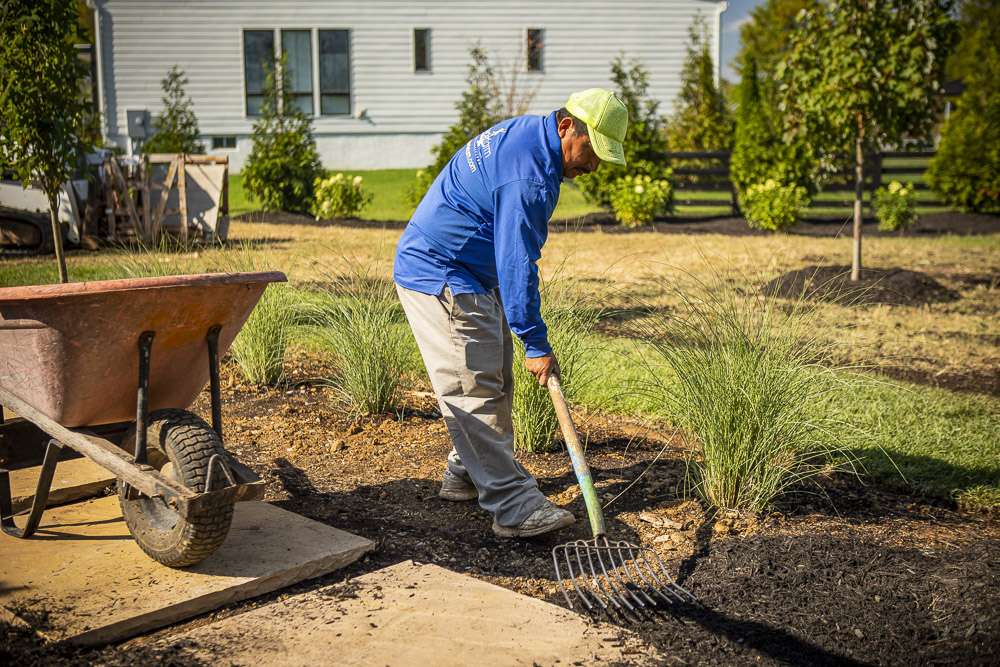
2. Install Plastic Edging Around Plant Beds
Plastic edging, which is often sold in hardware or big box stores, is often used to try and create a firm edge around plant beds. While we think edging is one of the good landscaping ideas, plastic edging is a bad one.
The trouble with plastic edging is the fact that it’s cheap. It can easily get mangled by mowers or weed whackers and it rarely stays in place where it’s meant to stay. If you’ve worked with plastic edging before, you probably know it almost always starts falling apart or sticking out. Edging like this becomes more of an eyesore than an aesthetic addition.
Having an edge cut into your plant beds or around tree rings with a spade is not a bad idea. It does add a clean look that contributes to a “finishing touch.” It also serves a functional purpose of separating mulch areas from grass areas, which can make mowing and maintenance easier.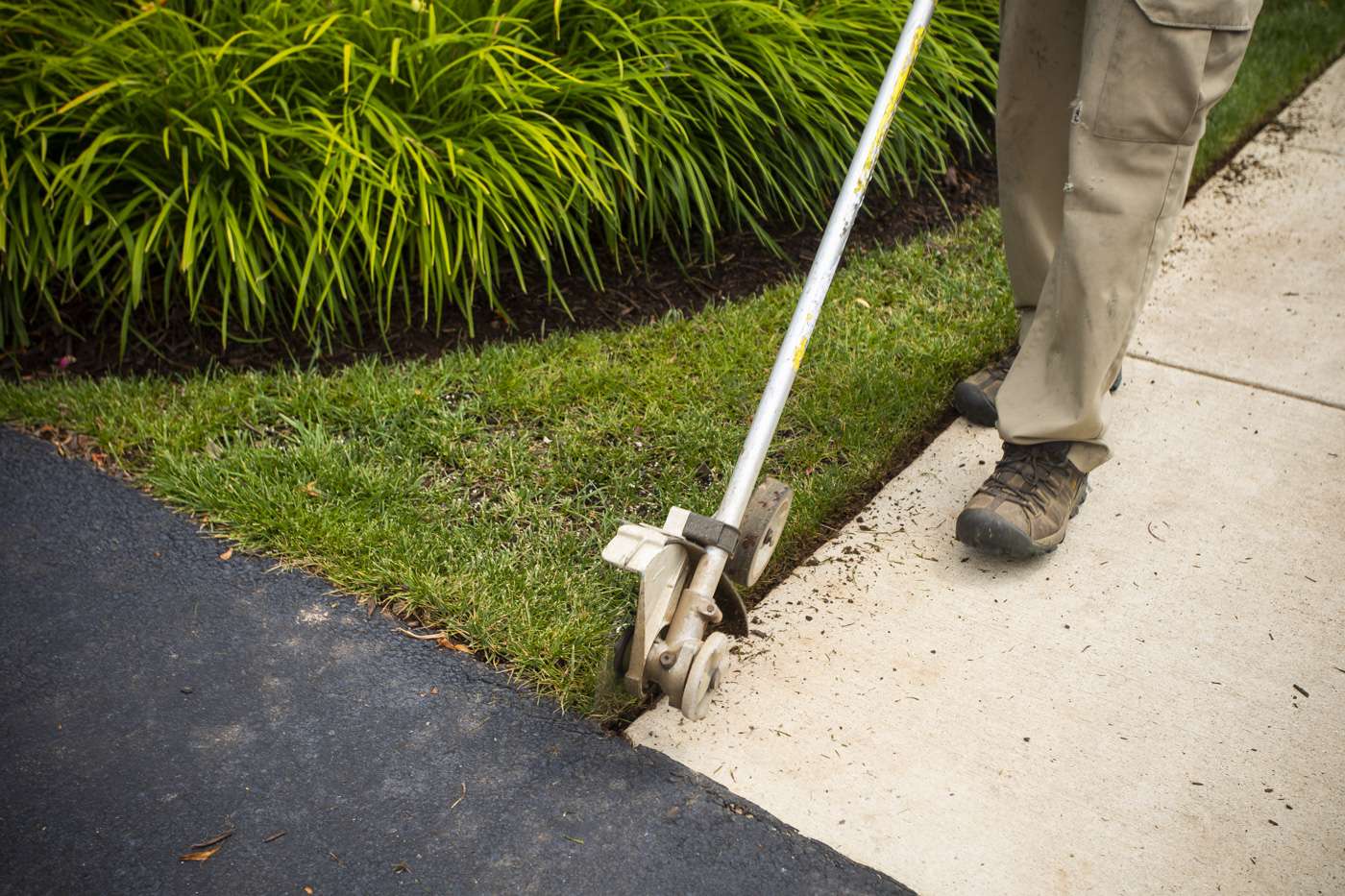
3. Use Recycled or Bagged Mulch from Home Improvement Store
Having mulch installed is a good landscaping idea. But having cheap mulch installed is a bad one. Even so, we find that many homeowners and even some pros don’t realize that the quality of the much they’re using really matters.
Mulching is one of those services that homeowners love because it makes their property look great. There’s really nothing like a fresh coat of mulch to refresh a plant bed. But people often don’t realize that mulch has functional benefits, too. It helps plants to retain moisture, it regulates soil temperatures, it suppresses weed growth, and it even adds nutrients to the soil.
The problem with subpar mulch is that it won’t reap all of these benefits. In fact, a subpar mulch could actually cause you some serious problems.
While bagged mulch picked up at the local hardware store can be of poor quality, homeowners (and yes, even some landscapers) run into the most trouble when they try to purchase mulch in bulk from a supply location that carries low-quality products. While it’s not always the case, some bulk suppliers use mulch made from recycled sources like ground-up pallets and two-by-fours. Now instead of a high-quality mulch that is putting nutrients into your soil, you could be introducing decaying or even diseased wood into your plant bed.
Sometimes recycled mulch that includes ground-up plant material even ends up having weed seeds in it. This means that your mulch could actually introduce unwanted weeds into your plant beds!
In looking for landscaping tips about mulch, the most important one that we can offer is “quality matters.” At Rock Water Farm, we are using virgin hardwood bark mulch, which means it has never been used for anything else. This high-quality mulch is going to give you the best results.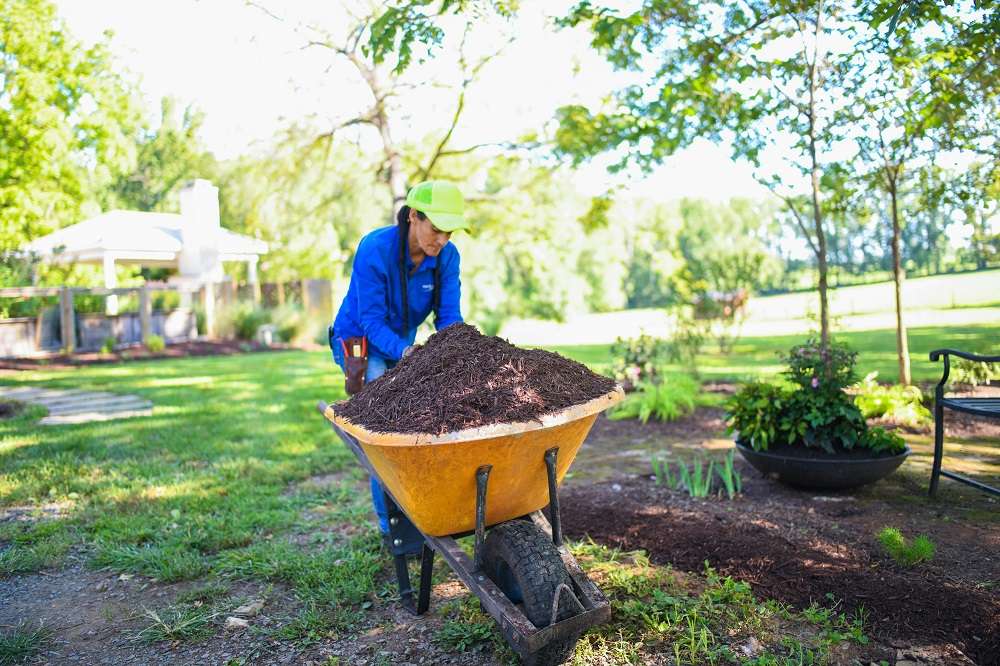
4. Buy Pretty Plants and Arrange As You Wish
In landscaping, there is a saying that goes, “Right Plant, Right Place.” It means that you should not only choose a plant that’s well-suited for your property and its conditions but you should also plant it where it’ll receive what it needs.
This is really important when it comes to a successful landscape design. But we see mistakes made in this area all of the time. Unfortunately, even some “pros” install plant material in places where it’s never going to perform well and ultimately set their clients up for failure.
We’ve seen Azaleas planted on properties where they’re getting full afternoon sun even though they really need afternoon shade. We’ve seen hydrangeas planted where they need shade and they’re in the sun (of course, to make it more complicated, some hydrangeas need sun and some don’t). The point is, it’s incredibly important to know what the plant needs and what the site conditions afford all day long. This requires not only some horticultural knowledge but also taking the time to assess the property’s conditions. It’s simply not enough to decide you like a plant but then give no care to where you choose to install it.
Of course, this is not the only area where mistakes are made. Another common mistake that we see made is choosing a plant that’s going to get too big for the area that it’s planted in. This might mean that it will eventually outgrow the space and really take over any other plant material that’s planted there.
But it could also mean that it’s planted somewhere that it’s going to cause problems. For instance, we’ve seen plants that are blocking windows or doors of the home because no attention was paid to how big they would get.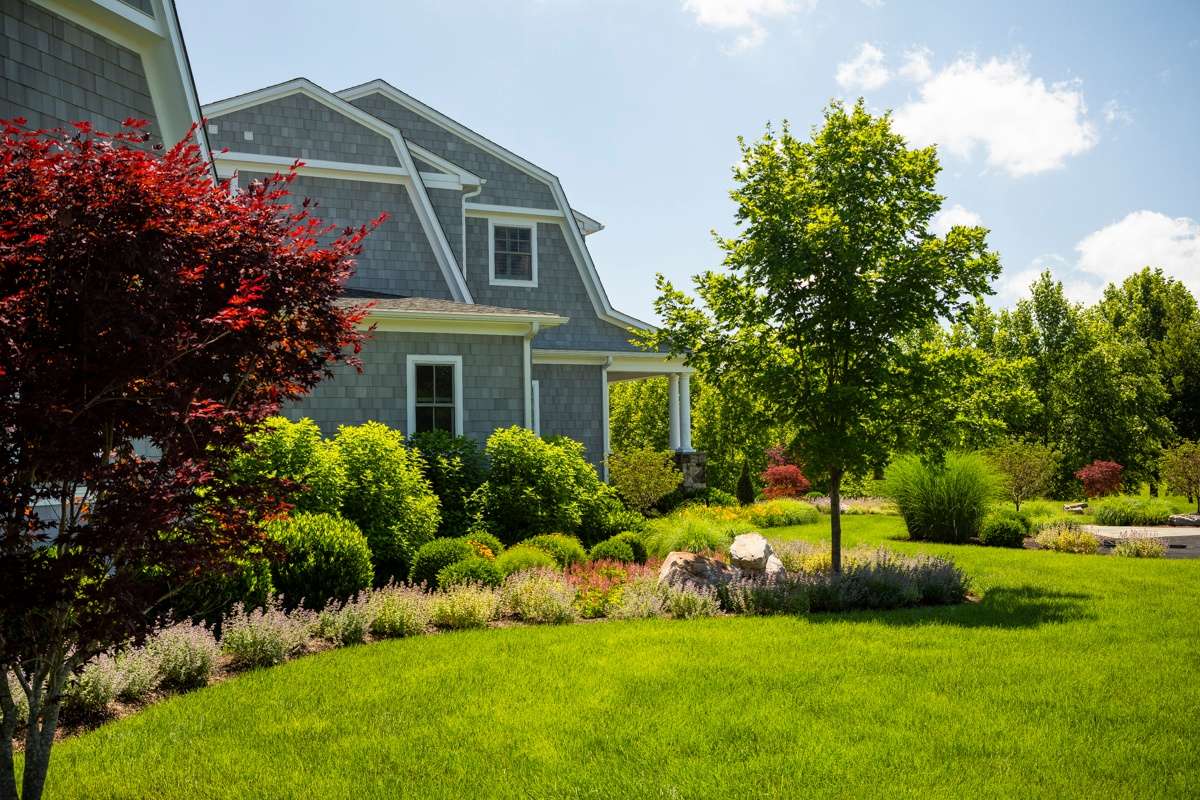
5. Plant Trees Where They Look Good (Now)
We’ve also seen planting errors made in regard to trees. Just like plants, it’s really important to pay attention to how big a tree is going to get over time. Even though trees take a long time to grow, you could be setting yourself up for trouble down the road.
One problem we’ve seen is when trees are planted too close to a house. Over time those branches might begin to block your view from inside the home or the branches might even grow against the home or roof, causing trouble.
Of course, what’s growing underneath the ground can potentially cause even more havoc! Tree roots can actually cause structural damage to your home’s foundation. We’ve also seen tree roots messing up homeowners’ driveways or even lifting pavers or causing cracks in patios.
It’s really important that a lot of attention to detail is given when planting trees. They can be such wonderful assets to a property that can be enjoyed for many years to come but it’s essential that they’re planted in an optimal location for their future growth. 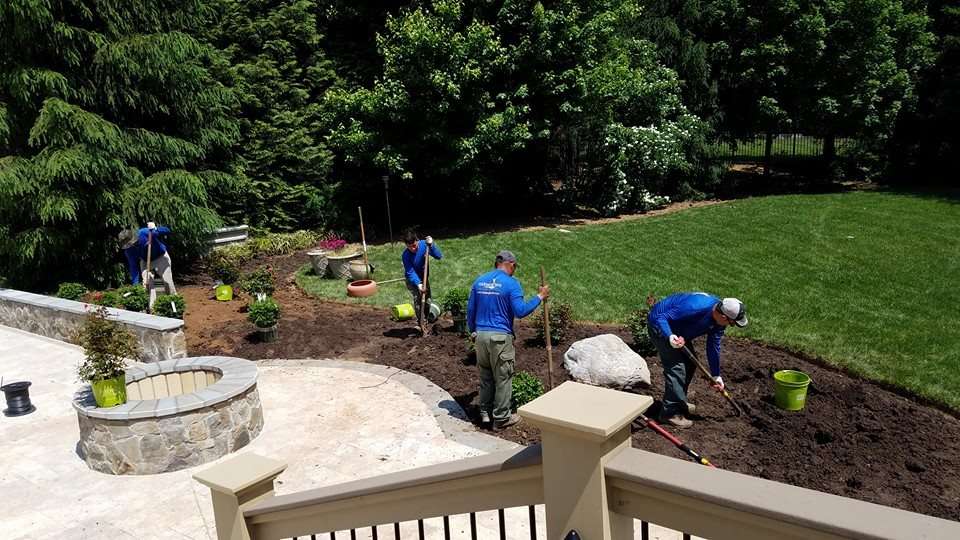
6. Trim Shrubs with a Hedge Shears (whenever you have time)
Pruning is one of those services that seems relatively cut and dry but the truth is, it can be complicated. That’s because different plants have different requirements and pruning them at the wrong time can actually cause damage.
We find that many homeowners don’t realize the timing for pruning can differ dramatically. While you might have looked up some landscaping tips about pruning and figured out what tools you need or where to make the cuts, the fact is, you also need to research plant types and when to prune them.
In other words, you can’t just set aside a weekend to handle all your pruning. Azaleas and Rhododendrons, for instance, only have a four to six-week window when pruning is appropriate because, after that, they begin to set flower buds for a new season. If you prune them too late, you could ruin their flowering ability.
Another way that pruning can go wrong is with the method. While many homeowners (and even some “pros”) use gas-powered or electric shears on everything, certain plant types (like Boxwood) are best pruned by hand. You can get away with shears on some plants, but not many of them.
Though it might seem like a simple service, pruning is actually something that is generally best left to a landscape professional who has the horticultural knowledge and expertise to perform it properly. 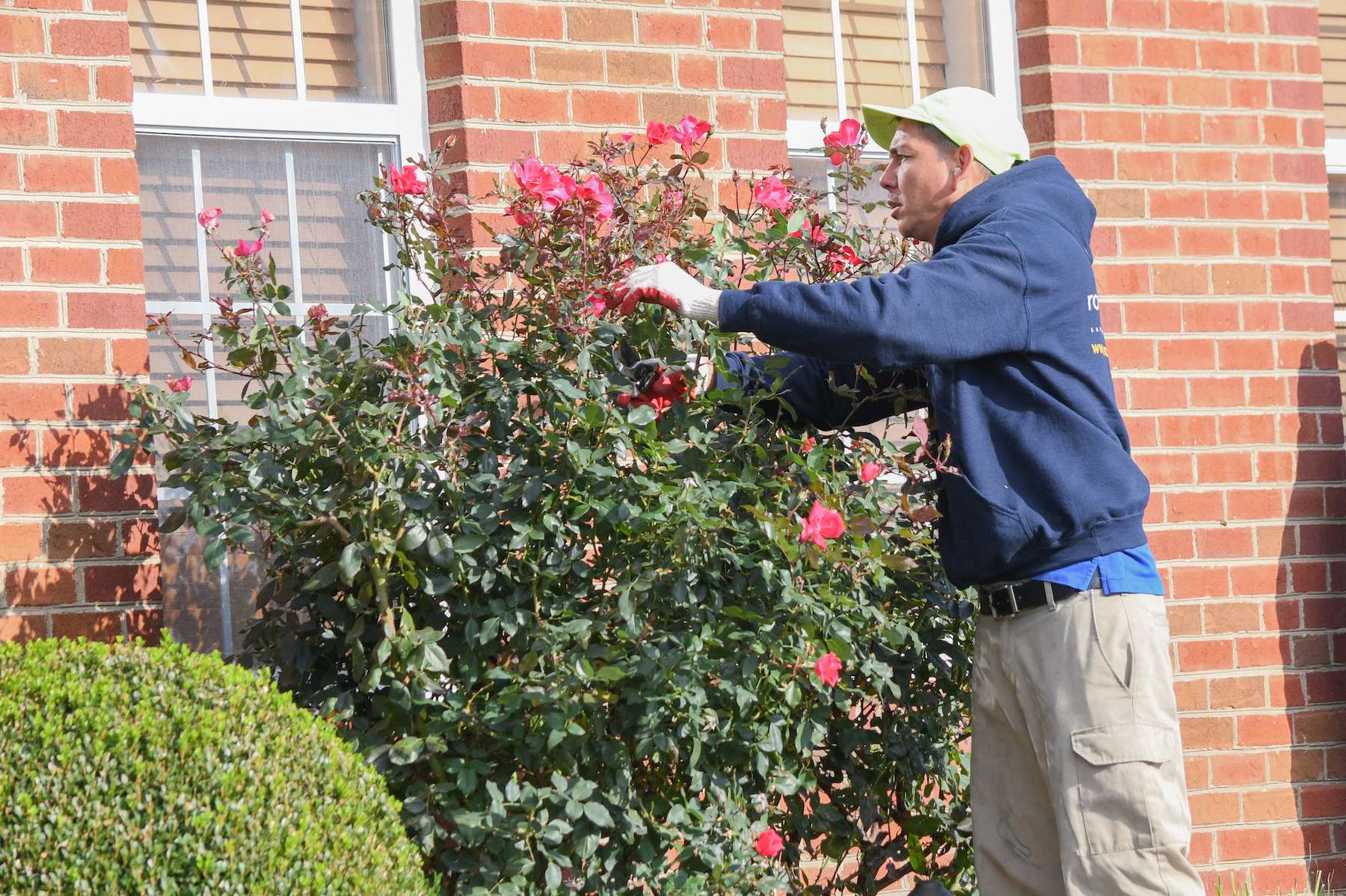
Choose a Landscaper Who Implements Best Practices
While everyone loves a good tip that might save time or money, a lot of DIY landscaping ideas and hacks ultimately end up being shortcuts that hurt your landscape. Unfortunately, sometimes landscape companies will utilize some of these bad practices if it saves time or money on their part somehow (allowing them to charge you more even when you’re getting less).
In this way, these hacks can lead to a hack job.
In fairness, sometimes inexperienced landscapers just don’t know better. They may not be out to try to get more money out of you but they might use an outdated or poor practice because they don’t realize there’s a better way.
This is why it’s so important that you choose a landscape professional who is committed to keeping up with best practices, hires well-trained team members, cares about horticultural experience, and doesn’t take shortcuts.
At Rock Water Farm, we take all of this seriously. We want you to end up with the best results and we understand that achieving them means avoiding bad landscaping tips and ideas. It also means educating our clients (and potential clients) on some of the bad ideas out there so that they don’t fall victim. As we mentioned early on, we hate seeing mistakes that were made on a homeowner’s property which could have been avoided.
You shouldn’t have to deal with hassles and aggravation because of poor practices. Fortunately, when you make a wise choice amongst landscape professionals, you won’t have to. You’ll know that your property is in good hands.
If you’re ready to get a landscape that you’re truly proud of at your South Riding, Ashburn, or Leesburg, VA home, talk to an expert, choose a solution that rocks, and get ready to enjoy your property to the fullest.



%20Facebook%202025-03-17%20at%201.11.44%20PM.jpg)
